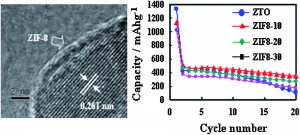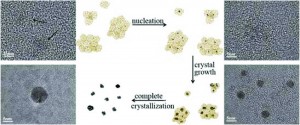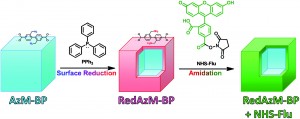Effect of dehydration on the mechanical properties of sodium saccharin dihydrate probed with nanoindentation
M. S. R. N. Kiran, Sunil Varughese, U. Ramamurty and Gautam R. Desiraju
CrystEngComm, 2012,14, 2489-2493
In this paper by Desiraju et al., an excellent study was carried out on the effects of dehydration on the mechanical properties of sodium saccharin dihydrate. These effects were probed with nanoindentation. The paper describes several novel features including a thorough study of the mechanical behaviour of sodium saccharin hydrate using nanoindentation with respect to the dehydration process. Time-dependent nanoindentation experiments were carried out to evaluate the variation in the mechanical behaviour of the crystals, initiated by the dehydration process, and the observed variations were correlated with the possible structural changes.

Large organic single crystal sheets grown from the gas–liquid and gas–liquid–solid interface
Hui Shang, Huan Wang, Na Gao, Fangzhong Shen, Xianjie Li and Yuguang Ma
CrystEngComm, 2012,14, 869-874
In this paper, Shang et al. described how large organic single crystal sheets can be grown from the gas–liquid and gas–liquid–solid interface, and highlighted following novel points:
1. A new gas–liquid interface technique is presented for the growth of anthracene (AN) and its doped single crystals.
2. The balanced force and isothermal evaporation of the solvent result in the expansion of the crystal into a three-dimensional stacked structure.
3. The results of X-ray diffraction and optical measurements indicated that such laminated films exhibited higher crystallinity and photoluminescence (PL) efficiency than those obtained by physical vapor transport (PVT) method or original solution growth (SG) method.
4. This crystal growth technique can be extended to the gas–liquid–solid interface to directly grow AN single crystals on electrodes (such as silicon wafers and gold substrates), which may be valuable for the preparation of organic single crystal based devices including light-emitting diodes and field effect transistors.
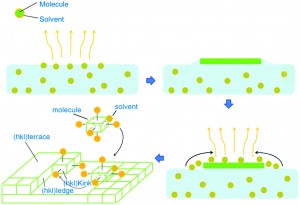
Hofmeister effects of ionic liquids in protein crystallization: Direct and water-mediated interactions
Magdalena Kowacz, Abhik Mukhopadhyay, Ana Luísa Carvalho, José M. S. S. Esperança, Maria J. Romão and Luís Paulo N. Rebelo
CrystEngComm, 2012,14, 4912-4921
Rebelo et al. have presented an interesting work on ionic liquid assisted crystallization of two proteins, lysozym and ribonuclease A. This paper showcases following interesting points:
1. They have shown experiments on the crystallization of two positively charged proteins, lysozyme and ribonuclease A, using ionic liquids as either crystallization additives or, in particular cases, as precipitating agents.
2. They thoroughly study the effect of Hofmeister anions on stabilizing the positively charged protein and followed by crystallization.
3. The mechanism of crystallization at low and high ionic strength has been nicely described.

Sonocrystallization of zeolitic imidazolate frameworks (ZIF-7, ZIF-8, ZIF-11 and ZIF-20)
Beatriz Seoane, Juan M. Zamaro, Carlos Tellez and Joaquin Coronas
CrystEngComm, 2012,14, 3103-3107
Seoane et al. describes in this paper the synthesis of Zeolitic Imidazolate Frameworks (ZIFs) via sonocrystallization. In comparison to the traditional solvothermal method, this process is a greener approach and requires less energy, as it occurs at a lower temperature. Using this method authors could convert ZIF-7 into ZIF-11 in-situ and obtain a pure phase of ZIF-11, which was not possible by the solvothermal method.

The role of mechanochemistry and supramolecular design in the development of pharmaceutical materials
Amit Delori, Tomislav Friščić and William Jones
CrystEngComm, 2012,14, 2350-2362
In this interesting Highlight, Jones et al. discussed the different aspects of the synthesis of pharmaceutical co-crystals by mechanochemical grinding. The authors provided a nice overview of the topic in a very lucid way and it shows a definite direction of synthesis of pharmaceutical co-crystals. Moreover they have shown that in some cases much variations and freedom can be enjoyed based on the procedure. The authors’ critical review on time-dependent co-crystallization and how grinding a co-crystal with one of the components of the co-crystal to obtain different co-crystals is also worth noting.
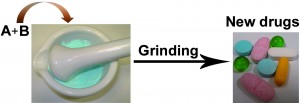
Facile synthesis of germanium–graphene nanocomposites and their application as anode materials for lithium ion batteries
Jinsheng Cheng and Jin Du
CrystEngComm, 2012,14, 397-400
This paper by Cheng et al., describes a simple and low-cost method to synthesize Ge nanoparticles/graphene (Ge NPs/GR) nanocomposites under mild conditions. The reduction of sugarcane bagasse (SB) derived graphene oxide nanosheets were accompanied by generation of Ge NPs in one step. This simple and straightforward synthetic approach is likely to find many practical applications. Interesting features of this paper include:
1. A simple, convenient and low-cost method to fabricate GeNPs/GR nanocomposites under mild conditions.
2. Enhancing their electronic conductivity.
3. High-capacity anode material for lithium ion batteries (LIBs).
4. Superior capacity retention of 90% after 15 cycles.
5. Potential application in the development of low-cost and high-performance LIBs.
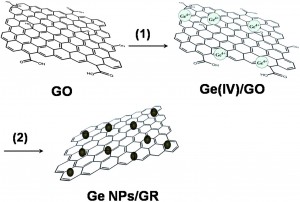
Facet-selective growth of Cu–Cu2O heterogeneous architectures
Shaodong Sun, Chuncai Kong, Hongjun You, Xiaoping Song, Bingjun Ding and Zhimao Yang
CrystEngComm, 2012,14, 40-43
In this recent report, Zhimao Yang and co-workers reported a facet-selective growth of Cu–Cu2O heterogeneous architectures for photodegradation of dye. The authors have demonstrated a facile protocol for the synthesis of facet selective growth of low-cost Cu nanoparticles on the {111} facets of polyhedral 26-facet Cu2O architectures to form polyhedral 26-facet Cu-Cu2O architectures, in a simple one pot synthesis reaction. The Cu–Cu2O architectures prepared with this method also showed better adsorption and photo-degradation of methyl orange as compared to the pristine Cu2O architectures.
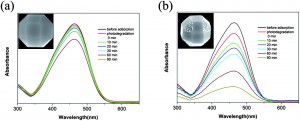
Self-assembled porous hierarchical-like CoO@C microsheets transformed from inorganic–organic precursors and their lithium-ion battery application
Jun Liu, Yichun Zhou, Chunping Liu, Jinbin Wang, Yong Pan and Dongfeng Xue
CrystEngComm, 2012,14, 2669-2674
In an important development towards material synthesis for energy storage, Liu et al. reported a simple, easy, one-step synthesis of interconnected CoO@C micro sheets using a solution phase technique. The porous hierarchical-like CoO@C nanohybrid has been well characterized and judiciously used as an anode material, which is found to exhibit highly reversible capacity along with excellent cycling performance and good rate capability. The hybrid takes advantage of the uniformly encapsulated crystalline CoO within two-dimensional thin carbon layers thereby resulting in an effective intercalation of Li+ ions. Here, the synergistic effect of the hierarchical nano-architecture and conducting carbon layer is found to result in an enhanced electrochemical performance of the hybrid.
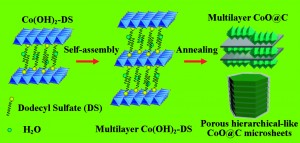
 Rahul Banerjee received his PhD degree from University of Hyderabad, Hyderabad in 2006 under the supervision of Prof. Gautam R. Desiraju. After postdoctoral work in UCLA with Prof. Omar M. Yaghi (2006-2008), he joined CSIR-National Chemical Laboratory, Pune, India in 2008 as a Scientist. His research interests include the study of structural chemistry with a focus on chemical synthesis to design new materials for hydrogen storage, carbon sequestration and catalysis. Additionally, his group is also engaged in design and synthesis of lightweight materials for storage, capture and proton conduction. Dr. Banerjee is an Editorial board member and an Associate Editor of CrystEngComm. He also served as a co-editor of Acta Crystallographica Section E till 2012.
Rahul Banerjee received his PhD degree from University of Hyderabad, Hyderabad in 2006 under the supervision of Prof. Gautam R. Desiraju. After postdoctoral work in UCLA with Prof. Omar M. Yaghi (2006-2008), he joined CSIR-National Chemical Laboratory, Pune, India in 2008 as a Scientist. His research interests include the study of structural chemistry with a focus on chemical synthesis to design new materials for hydrogen storage, carbon sequestration and catalysis. Additionally, his group is also engaged in design and synthesis of lightweight materials for storage, capture and proton conduction. Dr. Banerjee is an Editorial board member and an Associate Editor of CrystEngComm. He also served as a co-editor of Acta Crystallographica Section E till 2012.













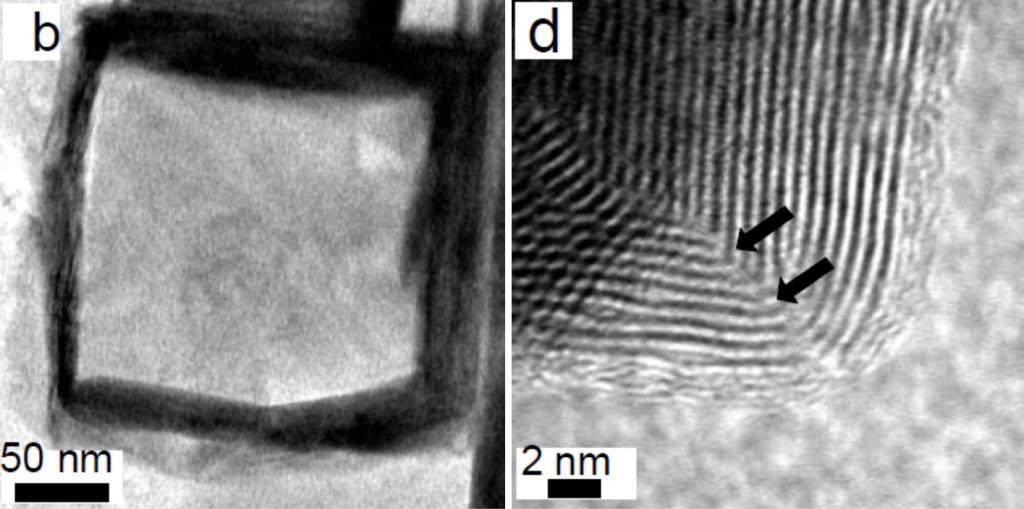


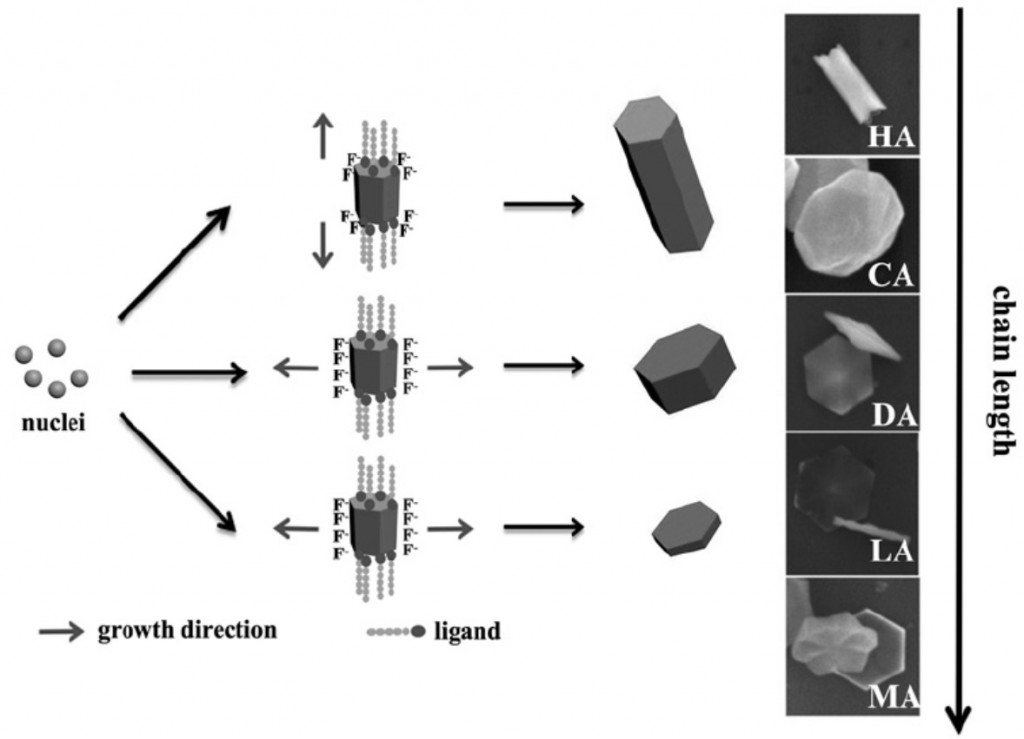

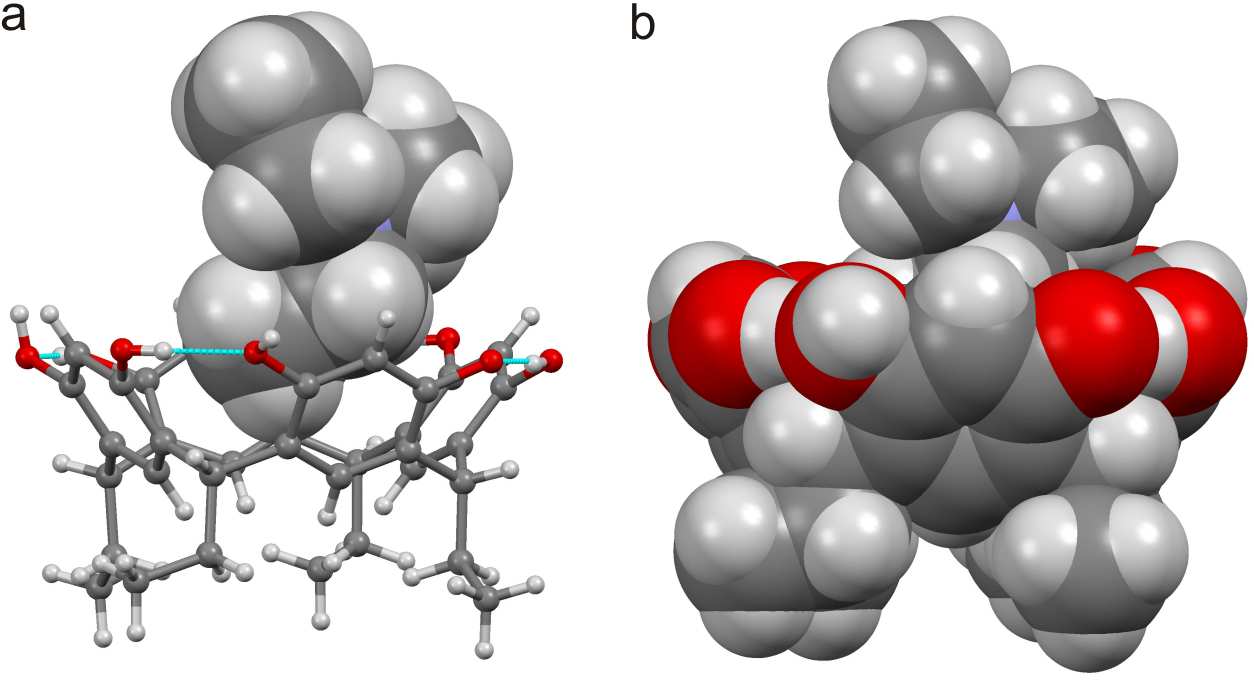
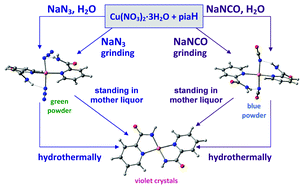
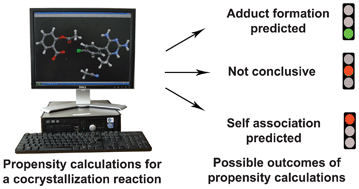
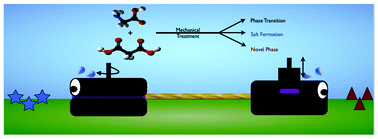

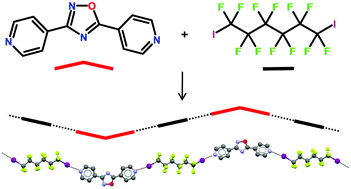 .
. 

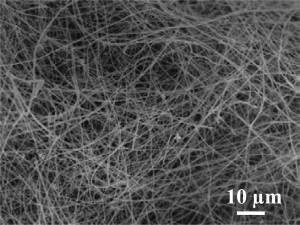

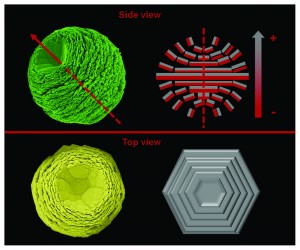
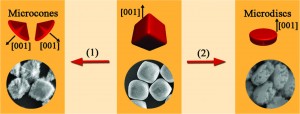
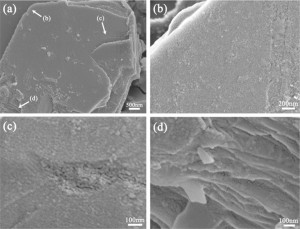



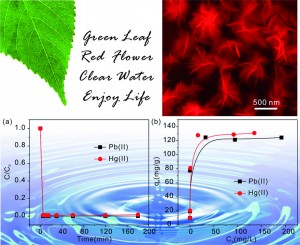
![Crystallographic analysis of CO2 sorption state in seemingly nonporous molecular crystal of azacalix[4]arene tetramethyl ether exhibiting highly selective CO2 uptake Crystallographic analysis of CO2 sorption state in seemingly nonporous molecular crystal of azacalix[4]arene tetramethyl ether exhibiting highly selective CO2 uptake](https://blogs.rsc.org/ce/files/2013/10/c1ce06126g-ga-293x300.jpg)
